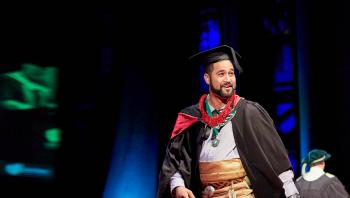Unitec, including students and staff, can be subject to big fines if copyright laws aren't followed - so please don't be offended if we ask you for more information before we copy or print your work.
Copyright protects original works
- Literary works - novels, poems, lyrics, e-mails and letters
- Dramatic works
- Musical works
- Artistic works - paintings, photographs, sculptures, architectural
- Film
- Sound recordings
- Communication works - broadcasts and internet transmissions
- Computer software
- Performances
Copyright doesn't protect
- Ideas
- Concepts
- Information
- Styles
- Single words, names, titles, slogans (although these may be protected in other ways, for example trademarks)
- Some government documents such as statutes
- Work in the Public Domain
Educational use:
Although the Copyright Act 1994 allows schools, public tertiary institutions and non-profit private training establishments to copy material from published works for educational purposes, the amounts permitted are limited.
Copyright Licensing Ltd (CLL) has therefore developed licensing schemes that extend the limited copying rights of educational institutions under the Copyright Act. With a licence you have advance permission to copy from a whole range of copyright protected resources, as well as the assurance that the copyright owners will be paid for any work copied. It’s worth noting that many of the authors of educational works are also teachers.
FAQs:
How long does a licence last?
The licence for schools commences on 1st July and expires on 30th June the following year. It is renewable annually. The licence for other institutions runs from January to December and is also renewable annually.
How many educational establishments in New Zealand have licences?
Most educational institutions in New Zealand (Universities, Polytechnics and Institutions of Technology, Wananga, private training establishments and schools) have recognised the benefits of having a licence and have a current licence in place.
What does the licence cover?
A licence allows for multiple photocopying and/or electronic copying of extracts from books, periodicals and journals for educational instruction, or for any other purpose authorised under the licence, as follows:
What else might a CLL Educational licence allow the copying of?
What can be included in educational compilations and workbooks?
What doesn’t the licence cover?
The licence does not permit the copying of the following material, which must be copied in accordance with the Act or with specific permission from the copyright owner:
-
- Up to 10% or one chapter of a book, whichever is greater
- Up to 15 pages of all or part of a single work in a collection of works even if the work is published separately, e.g. a published compilation of poems, plays or short stories
- One or part of one article from a periodical publication, or additional articles from the same periodical publication if they are on the same subject
- An artistic work (such as a diagram or illustration) included in a book, periodical or journal
- Subject to prior written approval from CLL, a complete work where the work is out of print or unavailable in sufficient quantity within a reasonable time at the normal price.
- Material obtained through the Interloan service if it cannot be obtained from any other source and
- A repeat copy from a work within 14 days of it being copied, where the copy is not made by the same staff member for the same class or course of study.
- All extracts copied under licence may be included in in-house compilations or workbooks, provided the source of each extract is appropriately identified.
- Except where small passages of copyright material (accompanied by source identification) are included in in-house compilations or workbooks, all copying should be true to the typographical format of the work copied.
- Licensees may recover the costs incurred in providing photocopies of copyright material to students.
- Works stipulating that they may not be copied under a copyright licence of this nature
- Works downloaded from the Internet
- Printed music (including the words)
- Loose maps and charts
- Unpublished religious orders of service
- New Zealand newspapers
- House journals (publications for employees)
- Photographs and/or illustrations published separately from a work
- Privately owned work (issued for tuition purposes and limited to a clientele who pay fees) or
- Theses, dissertations and student papers.




